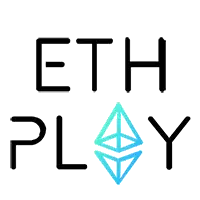
Crypto Lists has highlighted the resurgence of cryptocurrency adoption in several countries. Usage of cryptocurrencies, including Ethereum and Bitcoin, has raised concerns about the environmental effects they possess. Digital coins use a high amount of energy in their transactions. Ethereum blockchain, being the most used network, seeks to address this by closing in on a significant upgrade. The upgrade will alter its infrastructure to use 99% less energy. Ethereum’s implementation plan is by shifting from its Proof of Work model to a Proof of Stake model. This would significantly impact the crypto mining sector.
Current verification of transactions by miners on Ethereum
There are enormous amounts of energy required to secure cryptocurrencies’ networks. The securement is through mining crypto. Mining has diverse uses other than increasing or decreasing new coins into a network. It also verifies crypto transactions on a blockchain network while inputting them into a distributed ledger. Only verified miners can validate these transactions onto the distributed digital ledger. The network awards them with digital coins for using their resources. Therefore, networks developed ways of ensuring that only verified miners can mine and verify the crypto transactions. It led to the use of the current Proof of work model that also protects the network from external attacks.
However, mining consumes high energy with the Proof of Work model. Every node ought to solve a cryptographic puzzle. The stiff competition among miners to be the first to solve a cryptographic puzzle has cropped up on several large mining farms. Ethereum absorbs over 112 terawatt-hours of electricity annually. This is extremely high compared to energy uses in households and card transactions. Miners with a higher computation power have ease in mining. They often collaborate and use mining pools to combine their computation power and evenly distribute the rewards. The amount of energy is enormous. In addition, it limits small crypto miners against big players who have made crypto mining centralised. Such challenges led to the need for a better algorithm than the Proof of Work model on Ether.
Supply: 7,081,679,872 / 10,000,000,000
Release date: October 11, 2017
Description: Ready to buy or short sell Polygon? Learn more about a cryptocurrency with Indian founders, both advantages and disadvantages.
Risk warning: Trading, buying or selling crypto currencies is extremely risky and not for everyone. Do not risk money that you could not afford to loose.
The impact of the awaited upgrade to the Proof of Stake model to miners on Ethereum
The new model is Proof of Stake (PoS) which eradicates the competition among miners. The idea was initially proposed in a Bitcoin talk forum, Quantum Mechanic in 2011. In PoS, miners do not compete against each other for a block as one random node validates the next block. PoS users mint new blocks and are identified as validators rather than miners. A validator ought to have a security deposit of a particular amount of cryptocurrency as a stake. The higher the stake, the higher chances of minting a new block. For example, depositing a $1000 stake rather than a $100 stake gives you a ten times higher chance of selection into making a new block.
Despite all this, there is a possibility that a crypto miner can validate a fraudulent transaction or one that does not exist. It is where staking is useful since such validators lose a portion of their stake in verifying such transactions. The weakness of the Proof of Work model is highlighted when a single party buys the majority of the stake in a network and acquires the 51 percent ratio. Once they obtain 51% of the computation power, they effectively control the blockchain. The worst is that they can verify fraudulent transactions. The Proof of Stake extinguishes this weakness as users ought to stake an amount higher than their block rewards. If a user acquires the 51% percent ratio, they pass up way more than their earnings by validating a fake or fraudulent transaction.
When a user ceases to be a validator, their stake and transaction fees are only released after a particular period. This allows the network to penalise the user if they uncover that there were some fraudulent blocks. This mitigates against users acquiring the 51 percent ratio.
Additionally, Proof of Stake limits the number of validators to mine crypto. Therefore, there is less computational energy used. Users do not require advanced tech mining equipment. It significantly reduces the amount of energy in mining.
Crypto lists has identified Ethereum’s Proof of Stake launch to occur in Q2 2022. It is a welcome addition that impacts miners and investors in the network. There shall be more cryptocurrencies adopting the PoS model.





 BTC casino for the weekend? Try Flush with Polygon and more!
BTC casino for the weekend? Try Flush with Polygon and more! Deposit with AVAX and MATIC on Crazy Bit's no-KYC casino now
Deposit with AVAX and MATIC on Crazy Bit's no-KYC casino now ETH Play gets 172 Pragmatic Live casino games
ETH Play gets 172 Pragmatic Live casino games Big Bass Bonanza from Pragmatic Play win best game
Big Bass Bonanza from Pragmatic Play win best game 3 Bitcoin casinos to try the great Drops & Wins tournament!
3 Bitcoin casinos to try the great Drops & Wins tournament!





























